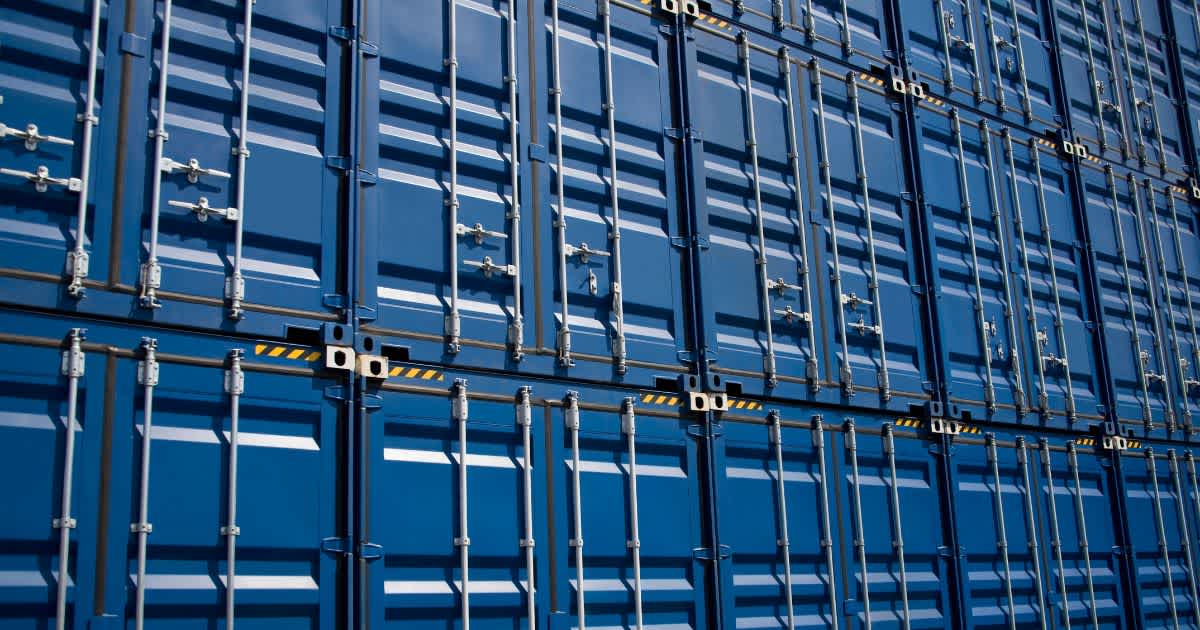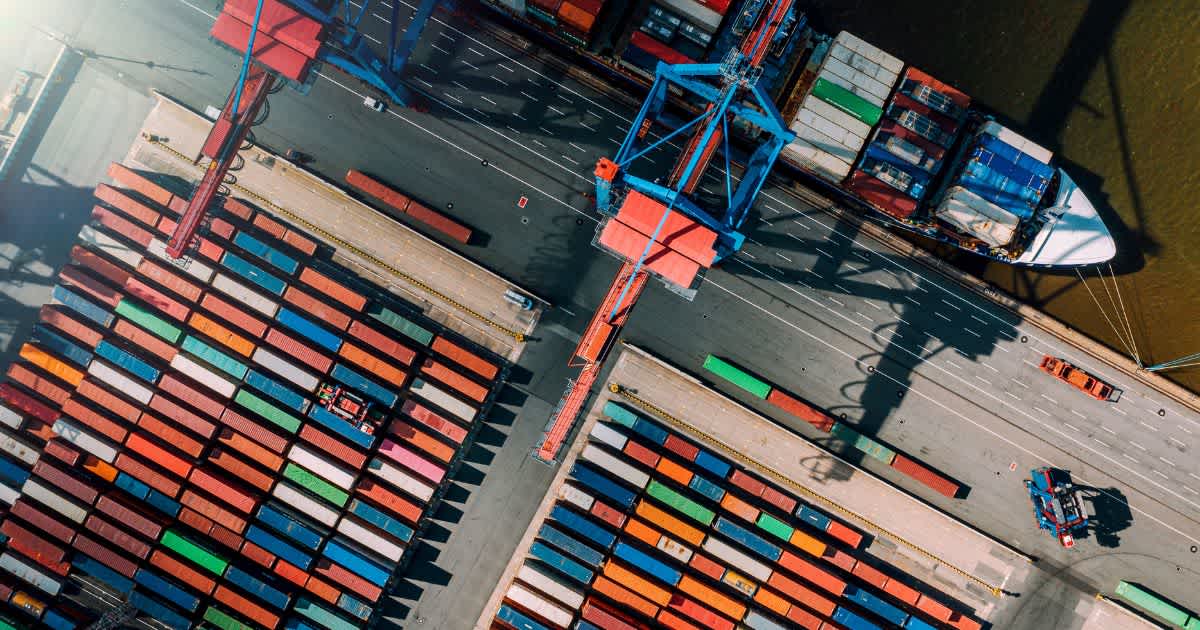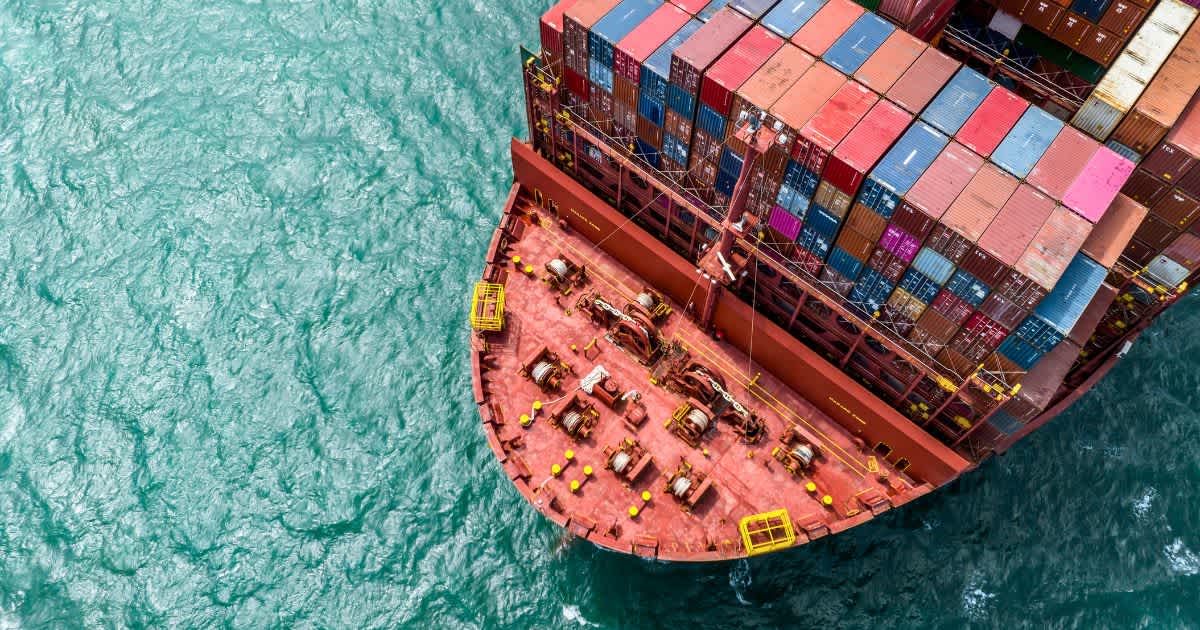Table of Contents
- The reality: high demands, little leeway
- Laws & regulations for container loading
- Preparing for container loading: Check & planning
- Loading containers step by step
- Load securing in containers – a concise explanation
- Loading overseas containers: What is important?
- Conclusion: Load containers systematically – for safe transport and satisfied customers
Loading containers: How to do it correctly
Reading Time: 5 min.

Whether goods are transported by sea, air or land, correctly loaded containers are essential for safety, cost control and smooth supply chains. Any improperly secured goods can cause damage, contribute to accidents or delay entire processes.
In this article, we show you how to load a container efficiently and in compliance with legal requirements, which regulations must be observed and how many pallets fit into a container.
The reality: high demands, little leeway
With increasing globalisation, not only are delivery distances growing, but so are the challenges. Today, containers must not only be resilient, but also loaded in compliance with regulations such as the CTU Code or SOLAS requirements for gross mass verification.
Added to this are factors such as:
Time pressure during handling
Different container types (e.g. 20-foot, 40-foot, high cube)
Growing requirements for transport security
Errors during loading are therefore not only annoying, but can also be expensive – due to damage, delivery delays or, in the worst case, accidents with legal consequences.
Laws & regulations for container loading
Anyone who loads a container bears responsibility – not only for the safety of the goods, but also for compliance with legal regulations. It is therefore essential for freight forwarders, manufacturers and shippers to be familiar with the most important rules and obligations. This is because, in the event of damage, a thorough investigation will be carried out to determine who is liable for what.
Who is responsible for loading the container?
In principle, the responsibility for proper loading lies with the sender or shipper. This means:
The goods must be stowed in the container in such a way that they cannot slip, tip over or be damaged during transport.
The load must not damage the container itself or endanger other road users – for example, through uneven weight distribution or inadequate securing.
Important regulations at a glance
CTU Code: This describes how cargo must be secured, distributed and documented – both for road and sea transport. Although it is not legally binding, it is considered an international standard.
SOLAS requirement: The gross mass (VGM) must be verified and documented before a container is loaded onto a seagoing vessel.
CSC label: Only containers with valid CSC certification may be used in international transport – they confirm the safe technical condition of the container.
Preparing for container loading: Check & planning
Careful preparation is required before the first pallet is loaded into the container. This is because incorrect or hasty loading is difficult to correct later on – with consequences for safety, transport time and costs. Whether it's a 20-foot container, a 40-foot high cube or a special solution: structured planning is crucial to success.
1. Check the container: Safety starts with the container
Before each load, the container should be thoroughly checked for defects and damage. Checkpoints are:
Doors & seals: Do the doors open and close smoothly? Are the rubber seals intact?
Floor & walls: Are there any cracks, holes or rotten floor sections?
Interior: Is the container clean, dry and free of residues (e.g. oil, dust, chemicals)?
CSC sticker: Is it present and valid?
2. Preparing the load
The goods themselves must also be suitable for transport. This includes:
Sturdy packaging: Cartons, crates or pallets must be able to withstand the stresses and strains of transport, e.g. stacking pressure, vibrations and temperature changes.
Uniform dimensions: Inconsistently packaged shipments make space planning difficult and increase the risk of gaps.
Labelling: Special markings and documentation are mandatory for dangerous goods or sensitive goods.
3. How many pallets fit into a container?
A common question – especially among new customers and SMEs – is: How many Euro pallets fit into a container? Here are the most important guidelines:
Container size | Internal dimensions (L×W×H) | Max. Euro pallets (120×80 cm) |
20-foot container | approx. 5,9 m × 2,35 m × 2,39 m | 10–11 pallets |
40-foot container | approx. 12,0 m × 2,35 m × 2,39 m | 20–22 pallets |
40-Fuß-High-Cube | approx. 12,0 m × 2,35 m × 2,69 m | up to 25 pallets (stacked) |
Note: The exact number depends on the type of loading (single layer, double layer), pallet type (Euro vs. industrial pallet) and, if applicable, spacing.
4. Plan weight calculation & distribution
Another critical point is weight management:
Comply with the permissible total load of the container (including its own weight!)
Keep the centre of gravity as close to the centre and the floor as possible
Avoid uneven load distribution, especially when transporting by truck or ship
Observe different density classes – light goods above heavy goods
Loading containers step by step
After careful preparation, it's time to get to the heart of the process: the actual loading. This is where it is decided whether the container will survive the transport load without damage – and whether safety and efficiency standards are met. A systematic approach is essential, especially when dealing with varying pallet sizes, irregular carton formats or sensitive goods.
1. Heavy at the bottom, light at the top This prevents tipping and protects sensitive goods.
2. Distribute weight evenly Distribute the load centrally and along the container axis. Do not overload the sides.
3. Avoid gaps Place the load flush and secure it with dunnage, wedges or air cushions.
4. Observe load limits Observe the permissible total weight. Avoid point loads.
Container size | Permissible total load (gross) | Dead weight | Max. payload |
20-foot container | approx. 30.480 kg | approx. 2.200 kg | approx. 28.280 kg |
40-foot container | approx. 30.480 kg | approx. 3.800 kg | approx. 26.680 kg |
40-foot high cube | approx. 30.480 kg | approx. 3.950 kg | approx. 26.530 kg |
Make sure that point loads are avoided – for example, by placing heavy machines on a small area. In this case, use intermediate plates or load distribution floors.
5. Final check Check straps, secure doors, apply seals, prepare documentation.
Load securing in containers – a concise explanation
Load securing is a key safety factor in container transport. Whether by truck or sea, without proper securing there is a risk of damage, accidents or even liability risks.
Two principles of securing:
Form fit: Goods are held firmly in place without any play (e.g. pallets stacked without gaps)
Friction fit: Securing by friction and lashing equipment (e.g. straps, anti-slip mats)
Important aids:
Anti-slip mats: prevent slipping on the container floor
Lashing straps & nets: secure heavy or bulky loads
Stowage cushions & wooden wedges: fill gaps and secure boxes
Avoid typical mistakes:
Unsecured gaps
Loosely stacked boxes
Uneven weight distribution
Loading overseas containers: What is important?
Transport by sea places special demands on container loading. Unlike land transport, sea freight is subject to rolling, pitching and pitching movements that place heavy strain on the cargo. That is why strict international standards apply here.
Things to keep in mind:
Seaworthy packaging
Goods must be protected against moisture, temperature fluctuations and vibration
Use of seaworthy stretch film, pallet covers or corrosion protection materials is recommended
Weight distribution & securing
The centre of gravity must be in the middle and as close to the floor as possible
Observe the CTU Code: cargo must not be able to shift in heavy seas
Fill loading gaps with dunnage or wood
Documentation & regulations
VGM (verified gross mass) information is mandatory
Containers must be CSC-certified
For dangerous goods: observe the IMDG Code & affix labelling
Conclusion: Load containers systematically – for safe transport and satisfied customers
Whether for freight forwarders, manufacturers, logistics companies or SMEs: correct container loading is crucial for safe, efficient and legally compliant transport. A systematic approach – from planning to loading to securing – prevents damage, delays and unnecessary costs.
Are you looking for support in global procurement?
Line Up is your partner for efficient global sourcing, secure supply chains and a smooth procurement process – worldwide.
We offer you practical solutions, sound advice and global experience.
👉 Make a non-binding appointment now: https://www.lineup.de/en/appointment/
Newsletter Registration
Sign up now for our free Line Up newsletter and stay up to date.





